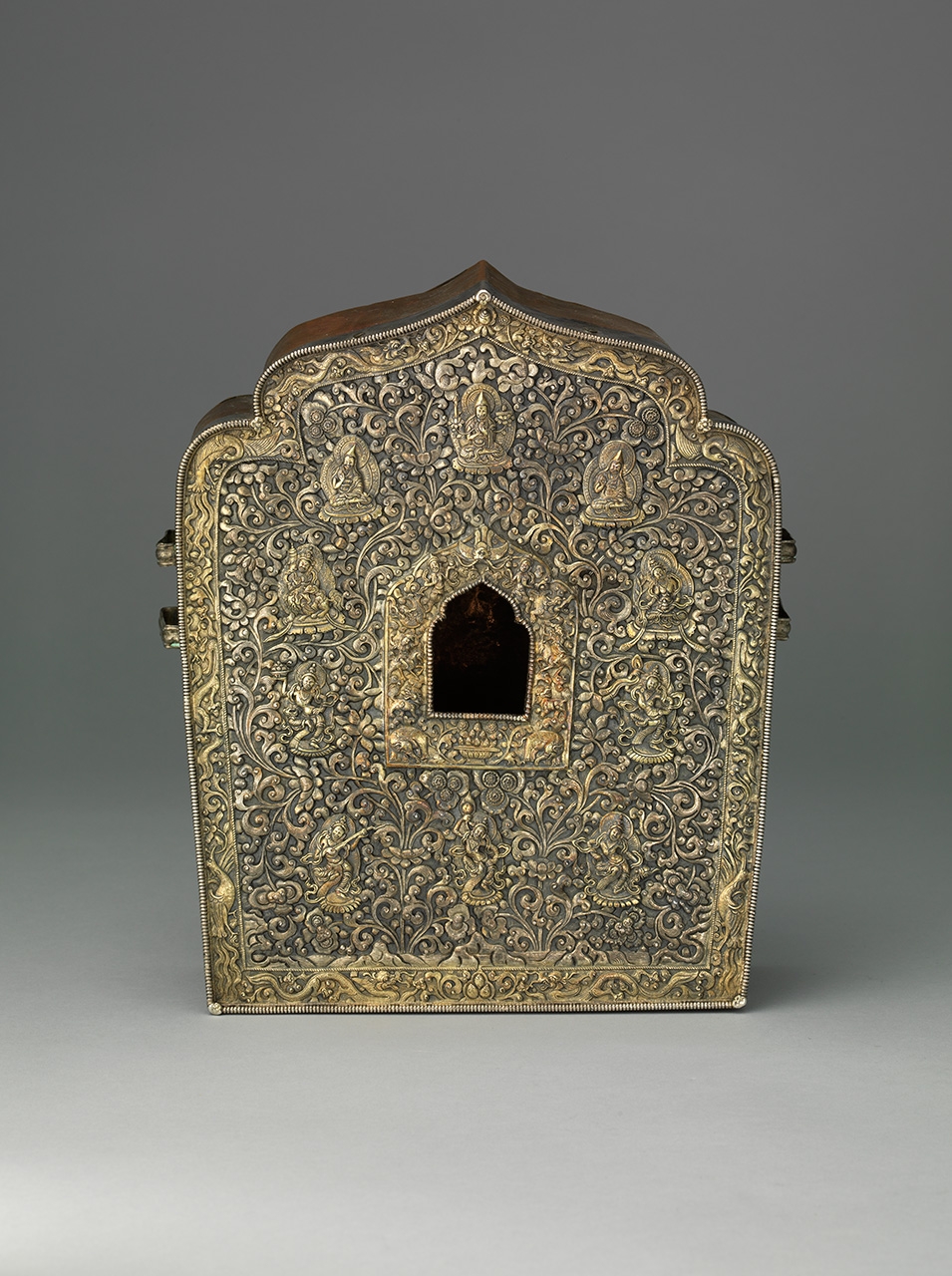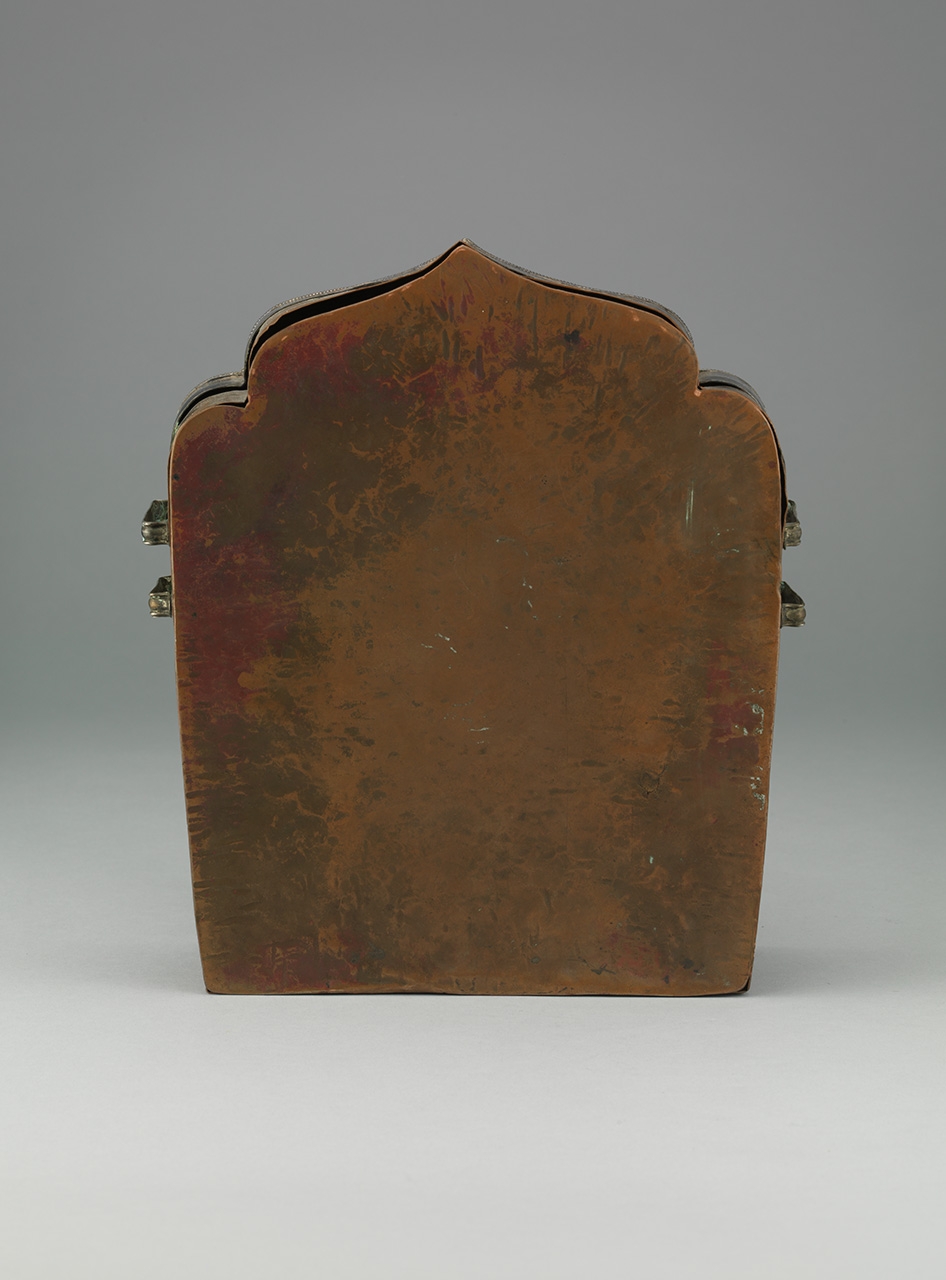
This amulet box (gau) would have been filled with religious contents to protect the wearer as well as serve as a portable shrine. The central window of such an amulet usually reveals a particularly precious object, such as a small sculpture or relic. The window’s frame is decorated with the six auspicious symbols known as the “throne ornaments”—from bottom to top on both sides: an elephant, lion, antelope (sharabha) ridden by a god (deva), sea monster (makara), serpent deity (naga), and garuda. Above the window are three important teachers of the Geluk School of Tibetan Buddhism—the school’s founder, Tsongkhapa (1357–1419), flanked by his two chief disciples—identifying the sectarian affiliation of the owner. Flanking the top of the window’s arch are two wealth deities, Vaishravana seated on a lion on the left and the goddess Vasudhara on the right. The five dancing goddesses below personify the offerings of the five senses (clockwise from the right): touch, smell, sight, hearing, and taste. The outer gilt border is a decorative pattern of alternating dragons and phoenixes. The amulet box’s multi-layered scrollwork and delicate figurative details testify to the accomplishment of the craftsmen who made it. Selective gilding further amplifies the preciousness of the work.
H 12 3/8 x W 9 3/8 x D 3 in.
C2008.21, HAR57003
- https://dev.rubinmuseum.org/images/content/784/c2008.21.front__zoom.jpg
- https://dev.rubinmuseum.org/images/content/784/c2008.21.back__zoom.jpg
- https://dev.rubinmuseum.org/images/content/784/c2008.21.front__zoom.jpg
- https://dev.rubinmuseum.org/images/content/784/c2008.21.back__zoom.jpg


